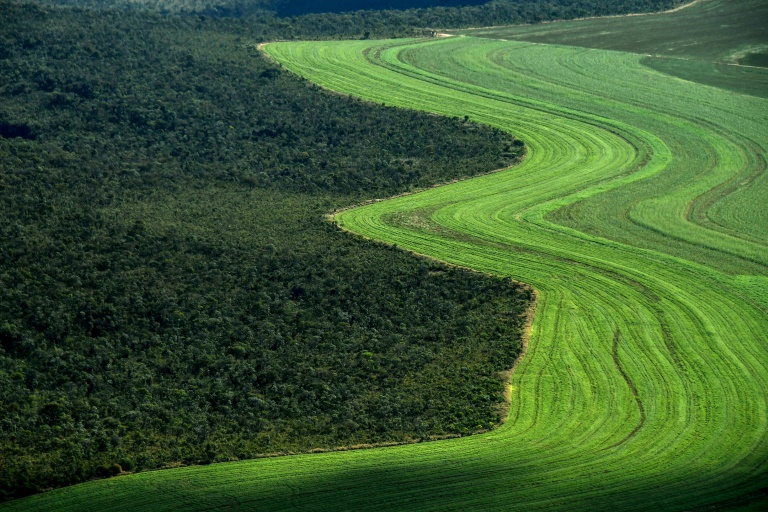As traditional agricultural lands dwindle, experts look to make desert farming more sustainable. Government projects to reclaim Egypt's desert lands began 60 years ago. Officials have touted desert farming as the solution for urban overcrowding, as well as Egypt's high unemployment rate.
In the last twenty years, various government programs have resettled millions of delta and Nile Valley farmers, university graduates and state employees whose companies have been privatized into the reclaimed desert farming communities in the Sahara desert. Such desert plots now account for around 25 percent of the country's agricultural land, according to Richard Tutwiler, the director of AUC's Desert Development Center (DDC).
“These communities are people who are parachuted in from all over, and have hugely diverse backgrounds. Young graduates are well educated, but some have no experience farming, while tenet farmers tend to be older, and have a lot of knowledge, but need to adapt it to the desert environment,” he adds.
Farmers are given small plots, generally between 2.5-5 feddans. Though much larger than the average plot in the Delta, the land is far less productive than rich Nile-side soil. Add in medium sized investor-owned farms, and large commercial farms and agribusinesses, which are typically two hundred times the size of the government-issued plots and desert agriculture becomes a complex mosaic of resource sharing.
“Farming on reclaimed lands is exciting because of the growth — it is really a frontier, and people are trying new things and innovating to find a better income,” said Tutwiler.
Desert farms are attempting to grow just about anything, from thirsty wheat and legumes to greenhouse vegetables. High-value permanent crops, such as citrus, banana, grapes and peaches are becoming more popular for small-hold farms. With these crops, desert farmers have an advantage over their delta counterparts: land. Tree and vine crops require far more land than traditional crops, and while start-up costs are higher, they net farmers higher prices in the market.
“Farmers who were once growing wheat and peanuts have shifted to tree crops, strawberries and turf,” said Tutwiler, adding, “It takes a long time to develop the desert, it needs careful development and costs money.”
As the Delta and Nile valley regions continue to urbanize, cutting into usable farmland, Tutwiler believes that finding ways to make desert farming sustainable is becoming increasingly important.
“In the desert, land is not a very big constraint; the issue is going to be soil nutrition and water,” he said. Indeed, desert farming presents unique challenges: A nutrient-rich top soil must be mixed with the sand, water must be channeled in from the Nile or taken from underground aquifers, and the arid conditions means more of it is lost to evaporation before ever reaching thirsty crops.
For decades, farmers have transported soil from the Nile valley and Delta region, which is then dumped onto plots. Nematodes, parasites and plant diseases moved with the soil, and were introduced into the previously sterile environment.
For Habib Ayeb, a professor at the American University in Cairo’s Social Research Center, this practice is a costly and temporary solution.
“Shipping enough soil to cover a single feddan of reclaimed desert costs the same as buying a new feddan in the Delta, but the soil needs to be replaced every five years,” said Ayeb.
“It's a very fragile ecosystem and the land is poor. With any new activity, you need elements of protection, of producing water and limiting chemicals.”
Instead, the DDC says farmers should use artificial fertilizers and sanitized compost.
According to Ayeb, even with enough water, soil and seeds, small plots are rarely profitable, and most families rely on a second source of income. For him, desert farming is profitable only for the already wealthy, who can afford to set up large farms that export luxury crops to Europe.
Desert farming accounts for the majority of Egypt's agriculture exports according to the DDC. However, Ayeb is quick to point out that small hold farmers have little direct access to international, and even national, markets, and instead sell for export crops, such as grapes or strawberries, to middlemen at low prices.
“I'm sure you've met people who tell you there isn't enough water, so why is Egypt one of the biggest exporters of water in the form of flowers to Norway, Sweden and Australia,” said Ayeb.
Water usage remains a contentious issue in desert cultivation. In the late 1980s, the government began drilling the Nubian Sandstone Aquifer, a vast underground reservoir which it shares with Sudan, Chad and Libya.
Many of the desert communities rely on the underground water reservoir to feed their plants, but as the resource is depleted, diesel pumps have been installed to bring the water above ground, greatly increasing the cost of operations.
“Desert farming is sustainable, as long as there is water,” said Tutwiler, adding that though the aquifer has been estimated to be able to support desert farming for 300 years, neighboring countries claims to the resource — such as Libya's Great Man-Made River, which supplies the country with water from the aquifer through underground pipes — mean Egypt's farmers need to focus on conservation.
“We need to start seeing farms adopting renewable energy and maximizing that water efficiency,” he said.
In the future, Tutwiler hopes that alternative energies, such as solar powered pumps, will replace the pricey diesel generators.




